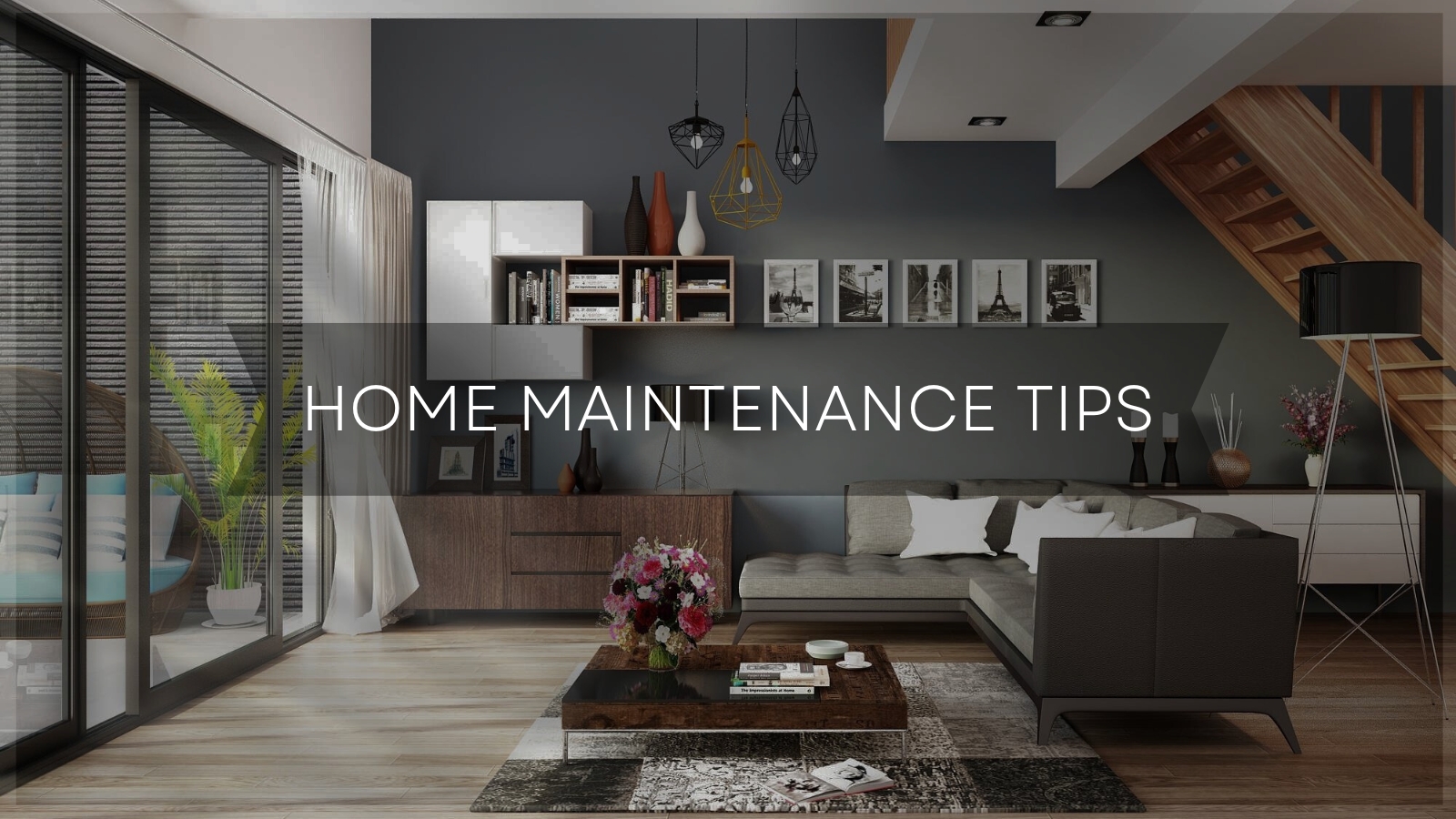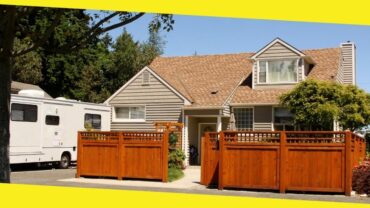7 Home Maintenance Tips You Need to Follow

Regular home maintenance is crucial for every homeowner, no matter where they live. It helps protect your most valuable investment — your home — and prevents small issues from becoming big, costly problems down the road. However, staying on top of home maintenance can be challenging, especially if you live in an area prone to specific weather conditions or natural disasters.
For example, the city of Brownsburg in Indiana experiences a continental climate with very cold winters and hot, humid summers. The area gets a significant amount of rainfall throughout the year, with spring and early summer being the wettest periods, and thunderstorms frequently occur during the warmer months. Additionally, Indiana falls within “tornado alley” in the Midwest, meaning tornadoes, especially in spring and summer, are a real threat that residents must prepare for. According to USA.com, the risk of tornado damage in Brownsburg is much higher than the Indiana average. As per the data, Brownsburg has experienced 4,776 extreme weather events since 1950, including 156 tornados with a magnitude of 2 – 4. These statistics highlight the importance of maintaining and protecting homes from potential tornado damage for homeowners in Brownsburg and surrounding towns.
While Brownsburg faces some unique weather challenges, every homeowner — regardless of location — should follow essential maintenance tips to keep their home in good shape. Here are seven important home maintenance tasks you need to stay on top of:
Contents
Toggle1. Inspect and Repair Your Roof
Your roof is the most important defense your home has against weather and environmental damage. Inspect it thoroughly at least twice per year, in spring and fall. Look for damaged, loose, or missing shingles, cracks, leaks, pooled water, and any indications of sagging or structural issues.
If you spot any problems during inspection, have them repaired immediately by a licensed and insured professional roofing contractor. For residents of Brownsburg, considering the local climate and weather conditions, searching for Brownsburg roof replacement near me can provide a list of qualified professionals familiar with the unique challenges your home might face. Left unaddressed, small roof leaks can lead to thousands in repair costs from water damage. Replacement shingles should match your existing ones closely in color and style. For major roof repairs, consider installing impact-resistant shingles rated for hail protection. In regions prone to heavy storms, tornadoes, or frequent hail, roofs may require more frequent inspections, yearly tune-ups, and possible impact-resistant upgrades.
2. Clean Gutters and Downspouts
Clogged gutters are a common cause of costly water damage. Make gutter cleaning part of your regular seasonal maintenance routine. Carefully use a ladder to access your gutters and remove leaves, sticks, seeds, and other debris. Pay special attention to the areas where gutters connect to downspouts. Flushing your gutters with a hose on a low setting can help dislodge built-up dirt and grime.
After cleaning, check that downspouts are securely attached to the home on all sides without leaks. Make sure they direct water at least 5 feet away from the foundation. Downspout extenders may be needed to prevent foundation flooding. Check the slope and clear any clogs or obstructions in underground drain pipes connected to downspouts. Consider gutter guards to reduce debris buildup. Signs of overflowing gutters include peeling exterior paint and wet spots or mold growth on walls or ceilings.
3. Inspect Plumbing Fixtures
Faulty plumbing leads to leaks, water damage, and potential mold growth. Inspect all plumbing fixtures annually for drips, corrosion, cracks, or other issues. Check under and around sinks for leaks, loose fittings, or worn sealant. Ensure toilets flush properly and aren’t constantly running. Inspect for tank cracks. Check water pressure at all faucets and showers.
Listen for running water in walls, which may indicate hidden leaks. Have a plumber make any needed repairs immediately. Consider investing in a sewer camera inspection every few years to check underground pipes for tree root intrusions or other hidden problems. Proactive plumbing maintenance prevents extensive water damage and ensures a properly functioning system.
4. Test Smoke and CO Detectors
Smoke and carbon monoxide detectors provide an essential early warning of danger. Test all detectors monthly by pressing test buttons. Batteries should be replaced twice a year. Install new smoke detectors every 10 years and CO detectors every 5-7 years.
Strategically place detectors on every level of the home, inside and outside bedrooms. Interconnected detectors with battery backups provide the best protection. Ensure detectors are clean of dust and debris, which can cause false alarms. Having working smoke and CO alarms dramatically improves safety in case of a nighttime fire or carbon monoxide leak.
5. Clean the Gutters, Drains, and Drainage Areas
Clogged gutters, drainpipes, window wells, drainage grates, and other areas can lead to flooding, wet basements, or crawlspaces. Clear leaves, debris, and sediment buildup from all drainage areas around your home’s foundation to prevent water issues. Flush underground drain pipes with a hose on full pressure. Install window well covers to keep out leaves.
Check grading around the home to ensure the slope directs water away from the foundation. Fill in any low spots. French drains or drainage tile may be needed for chronic wet basement or crawlspace issues. Keeping drainage areas clear and functioning properly prevents water seepage into basements, erosion, and foundation damage.
6. Inspect Electrical System and Appliances
Faulty wiring and electrical appliances present serious fire and shock risks. Schedule a licensed electrician to inspect your home’s electrical system once a year or if you experience flickering lights, tripped breakers, or outlets with no power. They can address any wiring issues, ground faults, or overloaded circuits.
Have major appliances like refrigerators, washers, and dryers professionally serviced to check for wear and tear. Replace any with frayed power cords or damage. Clean lint buildup from dryer vents and exhaust fans. Ensure appliances are properly grounded. Upgrading older wiring and outlets improves electrical safety.
7. Trim Trees and Landscaping
Trees, shrubs, and plants that are too close to your home can cause damage. Prune back any overgrown branches or vines growing on siding or roofs. Keep trees trimmed at least 3 feet from the roof to allow air circulation. Remove dead or rotting trees that could fall and cause damage in storms.
When planting near the home, allow enough space for growth. Use mulch and edging to prevent vegetation from spreading. Clean out accumulated leaves and debris from landscaping beds near the foundation. Maintaining proper clearance and trimming vegetation minimizes pest access, moisture issues, and foundation damage.
Conclusion
Regular home maintenance may seem tedious, but it saves you money, protects your investment, and gives you peace of mind. Make maintenance a priority by scheduling seasonal inspections and sticking to a routine. Pay special attention to any unique risks your home faces due to weather, natural disasters, or other factors in your region. With proper care and upkeep, your home will provide comfort, safety, and enjoyment for many years to come.
You may like this
Recommended For You
Top Tips To Get Essential Privacy In Your Home
Most Inside
Most Inside offers high-quality recommendations and valuable updates to enhance all aspects of your life, providing premium guidance and enriching experiences.




